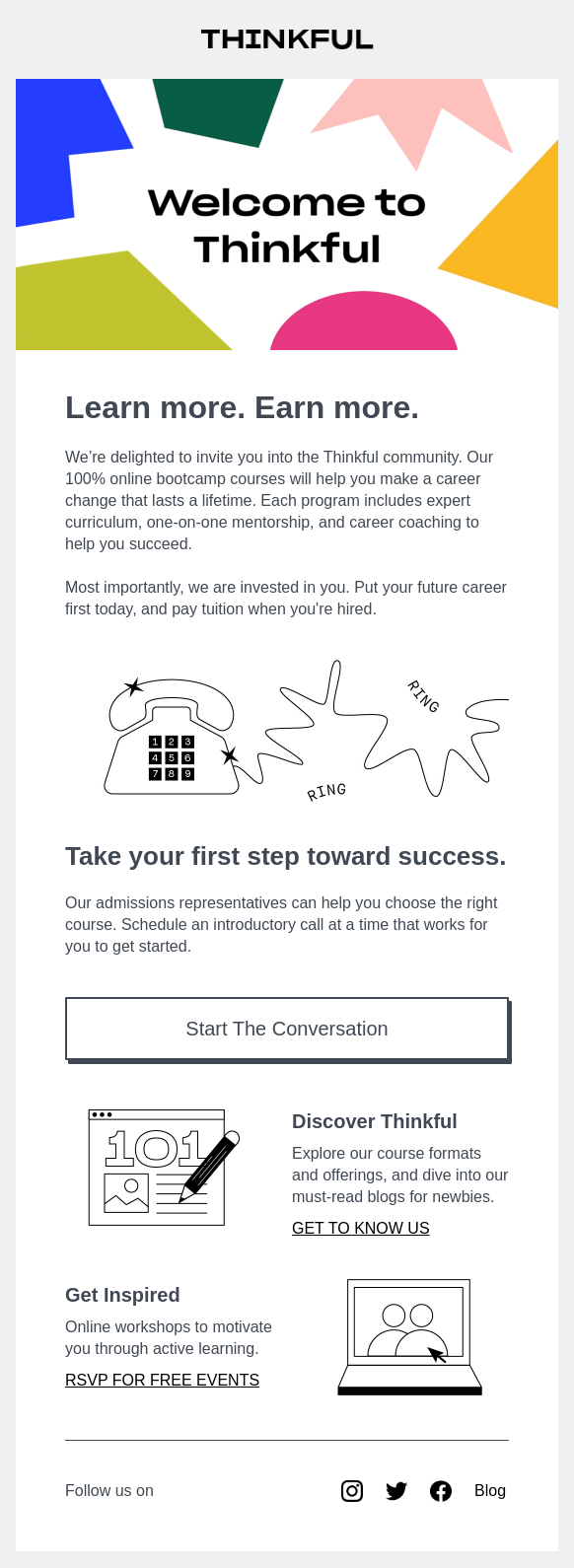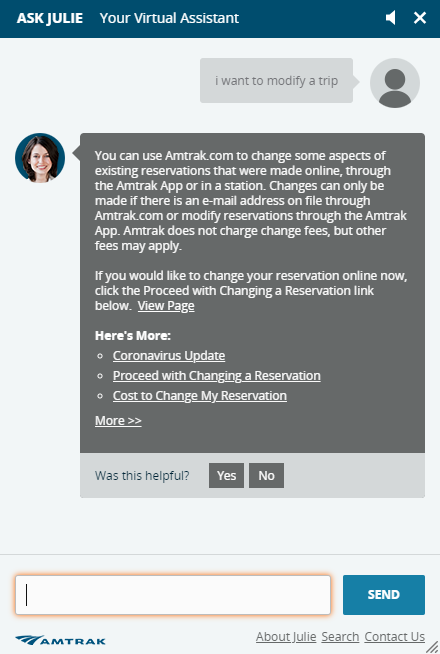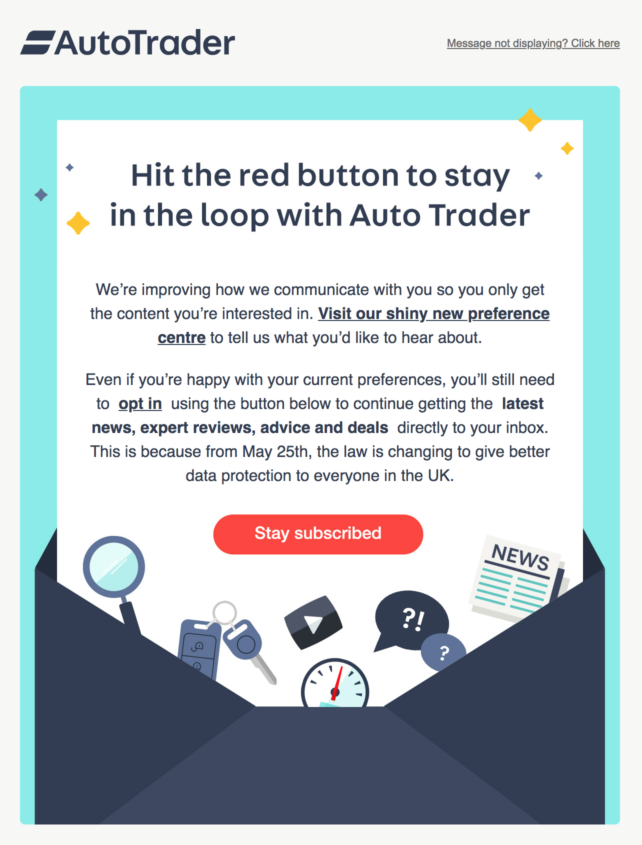Email marketing has been around for well over a decade. Considered to be the most personal form of communication, a robust email marketing strategy helps you offer customized content, engage customers, and build long-lasting relationships.
While email marketing continues to deliver results, it’s interesting to note the rise of chatbots in recent times. With consumers expecting lightning-speed responses and one-on-one attention, businesses are turning to conversational marketing.
Research shows that 55% of people use chatbots because they expect instant responses.
Apart from the customer service aspect, chatbots help you qualify leads, provide an enhanced user experience, and collect valuable customer data. What’s more, chatbots also cut operational costs by 30%, proving to be a cost-effective solution too.
Yes, both email and chatbots offer immense benefits. But the question isn’t whether it’s “email marketing vs chatbot strategy.” It’s about how you can leverage both channel’s strengths to meet your business goals.
Five ways to integrate email marketing with a chatbot strategy
Let’s take a look at five ways to combine your email and chatbot strategies to drive engagement.
Collect email addresses
For your email marketing efforts to be rendered successful, you need a qualified mailing list consisting of people who are willing to receive email communication from you.
One of the most effective ways to grow your mailing list is through a chatbot. They manage to attract attention and engage website visitors. As opposed to a lead form or pop-up, users are more likely to respond to chatbots due to their conversational nature.
However, you need to have a tactful approach in place. You shouldn’t ask visitors for their email address as soon as they land on your website.
It’s important to establish triggers based on your website visitors’ specific actions that indicate interest. For instance, if someone is browsing the blog, you might want to ask them if they’re interested in subscribing to your email newsletter.
Alternatively, you can also offer valuable incentives in the form of eBooks, guides, demos, etc., through chatbots, in return for their email address.
Tidio’s chatbot offers a downloadable PDF to capture leads
It’s important to ask for an email address at a time when you’re convinced that the user is truly engaged in your brand. Otherwise, it’s just a waste of an opportunity.
Create segmented mailing lists
Mass email campaigns no longer do the trick. People want to receive relevant emails that cater to their individual needs.
This is where segmented lists come into the picture. When you segment your email list, you’re able to deliver the right emails to the right person at the right time. In fact, marketers have found a 760% increase in email revenue from segmented campaigns.
Here are some common ways to segment your mailing list:
- demographics;
- location;
- personas;
- stage in the sales funnel;
- prior purchases;
- website behavior.
The good news is that you can configure your chatbot to collect specific data, helping you segment and qualify prospects based on their responses. Build a conversation flow chart to map out different possibilities and visualize multiple chat scenarios.
You can then leverage the information you collect to create personalized and targeted email campaigns to drive engagement and conversions.
Max Life Insurance’s chatbot asks specific questions to segment website visitors
Generate and follow up with warm chat leads
Chatbots are always online which means at any given point in time, they can strike up a conversation with website visitors, offer personalized solutions, and convert them into warm leads.
A warm lead is defined as someone who has shown interest in your product or service by subscribing to your email newsletter, engaging with your website, or even following your brand on social media.
Warm leads are extremely valuable because they have higher chances of converting.
Hence, once the chatbot generates warm chat leads, you can send them an email that builds credibility while encouraging them to book a phone call with your sales team. You can include pieces of content such as case studies, customer testimonials, and reviews among others.
 An onboarding email to warm leads from Thinkful; source: Really Good Emails
An onboarding email to warm leads from Thinkful; source: Really Good Emails
Enhance customer service
There is nothing more frustrating for a customer than to be put on hold or receive a “no-reply” automated email. As per a study, 66% of consumers expect real-time responses and interactions — and chatbots can help you achieve that.
Being available around the clock, chatbots have the ability to offer instant solutions and delight prospects or customers. That’s not all, chatbots can multitask and have one-on-one conversations with multiple customers at once.
An example of a success story is the railway company, Amtrak. After having deployed a chatbot on their website, the business saw a 50% increase in user communication and $1 million saved on customer service.
 Amtrak’s chatbot offers instant customer service support
Amtrak’s chatbot offers instant customer service support
It’s a good idea to promote your chatbot customer service experience in emails and let people know that they can get instant support by using the chat functionality of your website. You can include a link to your chatbot in welcome emails and post-purchase emails.
You should also leverage chatbots to gather quick feedback seamlessly and use that data to further improve customer experience.
Offer a communication channel preference
Not everyone likes to be bombarded with emails or text messages. For instance, Generation X might prefer emails but millennials are more likely to engage with chatbots.
Hence, to assume a preferred communication channel is a grave mistake because it just ends up annoying the customer.
To avoid such a scenario, you should present multiple options and ask them for their preferred mode of communication. This paves the way for a more beneficial relationship and ensures that your messages or emails are not going unread or going to spam.
 Auto Trader inviting users to update their preferences; source: Really Good Emails
Auto Trader inviting users to update their preferences; source: Really Good Emails
Combine email and chatbots: The takeaway
There are instances when email wins and others when chatbots do.
So, don’t be quick to pick one over the other. Combine email and chatbots by playing to their strengths. This will help you amplify your online marketing strategy, reach customers where they are and deliver a seamless customer experience.